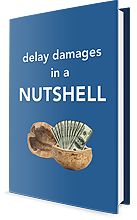10 Strategies To Help Ensure Your Construction Project Has An Approved Schedule
We’re going to talk about how we can make sure we have an approved schedule on our projects. It’s important to have a schedule that shows the contractor’s and the rest of the project team’s plan for executing the work.
Scheduling is not an exercise we go through just at the beginning of the project. A schedule is certainly not something we want to reconstruct at the end of the project, to figure out what happened.
The goal is to always have a complete, up-do-date (approved, accepted, or acknowledged) schedule in the hands of everyone who’s participating in the project.
We’re taking the position that there are 10 things you can do to ensure that your project has an approved schedule throughout the duration of the project. There’s probably more than that, but what we’ve tried to do is group the basic things that we think are important to ensuring the existence of an approved schedule on your project.
1. Commit to the Project Schedule
It’s very important that all project participants commit to using the project schedule.
2. Use the Project Schedule to its Fullest Utility
Use the project schedule to manage the work. Schedules are project management tools and are therefore available to the project manager so they can more successfully execute their projects. To be of value, schedules must be used. The schedule should also be modified to reflect additions to the project’s work scope as well as changes to the intended construction sequence.
3. A Good Scheduling Specification is Essential
One way to ensure that we get a good schedule on the project, that is prepared in an acceptable form, is to have a reliable scheduling specification in the contract. With the scheduling specification in place within the contract, the contractor knows the importance an owner places on the schedules, and what requirements the owner places upon the submission of that schedule.
In the past, we’ve touched on what a good scheduling specification contains. If you’re interested in obtaining an example of what I would consider to be a good scheduling specification, I’d be happy to share with you.
4. Review Each Schedule Submission in a Timely Manner
When the contractor prepares the schedule and submits it, make sure that the submission is reviewed and commented upon in a timely manner. That’s the next step in ensuring that we have an approved schedule of the project, that our review is timely, and that we approve the schedule based on an approvable submittal.
5. Enforce the Scheduling Specification
We really do need to enforce the specification. The scheduling specification has components in it to ensure that we have a good schedule on the project. By enforcing the specification, you dramatically increase the chances that your project will have an approvable, good schedule in place that allows you to use the project schedule as an effective management tool.
6. Understand that the Schedule Belongs to the Entire Team
Keep in mind that the schedule belongs to the entire project team. I know that the contractor prepares it. I prepare schedules for contractors, so I know how important it is to them.
I also know that, in large measure, the schedule is based on the contractor’s means and methods regarding the execution of the project work. So much of what’s in the schedule belongs to the contractor.
However, there are other parties who have obligations on a project (like subcontractors, the owner, design consultants, etc.) All their activities should be in the schedule as well. For the schedule to be truly effective, it must be accepted by everyone who is a part of it. Getting input from the entire project team is an important part of having an approved project schedule.
7. Accept that Finishing Early is a Win-Win
What I’m talking about here is what’s known as early completion schedules. I think they are, to some extent, viewed negatively in the industry. I believe they should be viewed quite positively.
8. Don’t Stop Submitting Updates
The schedule needs to be in place throughout the entire duration of the project. We know that problems occur on a project and, as a result, the contractor’s plan for executing the project will also change.
When this happens, it’s important for the project schedule to address these problems, or for the project schedule to reflect these changes in the plan. The way we do that is by updating the schedule on a regular basis, usually monthly. On some projects, however, it could be more frequently to make sure the schedule is up-do-date, current, and truly reflects how the project team anticipates executing the work.
9. Identify the Party Responsible for Delays
One of the things we can use a good project schedule for is to measure and identify the cause of delays. The nice thing about schedule updates is that they immediately reflect when your project is experiencing delays. Once you’ve identified the delay, it’s important to evaluate the project facts and properly assign responsibility for each delay to the responsible party. This evaluation requires an understanding of the contract requirements as well as the facts and events of the project.
10. Resolve Delay Issues and Time Extension Requests ASAP and at the Project Level
Once the project delays are identified, the project team can act quickly to resolve the delays and come up with appropriate time extensions. Alternatively, the team can determine the most efficient and effective way to accelerate the project in order to mitigate the delays that have occurred. These things need to be performed promptly because it’s much easier to accelerate the project at its inception than it is to do so as the project is almost at an end.
Scott Lowe is a Principal of TRAUNER and is an expert in the areas of critical path method scheduling, construction claims preparation and evaluation, and specification writing.
Scott can be reached at scott.lowe@traunerconsulting.com.

